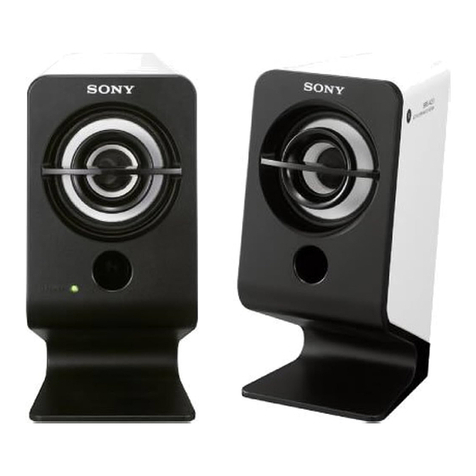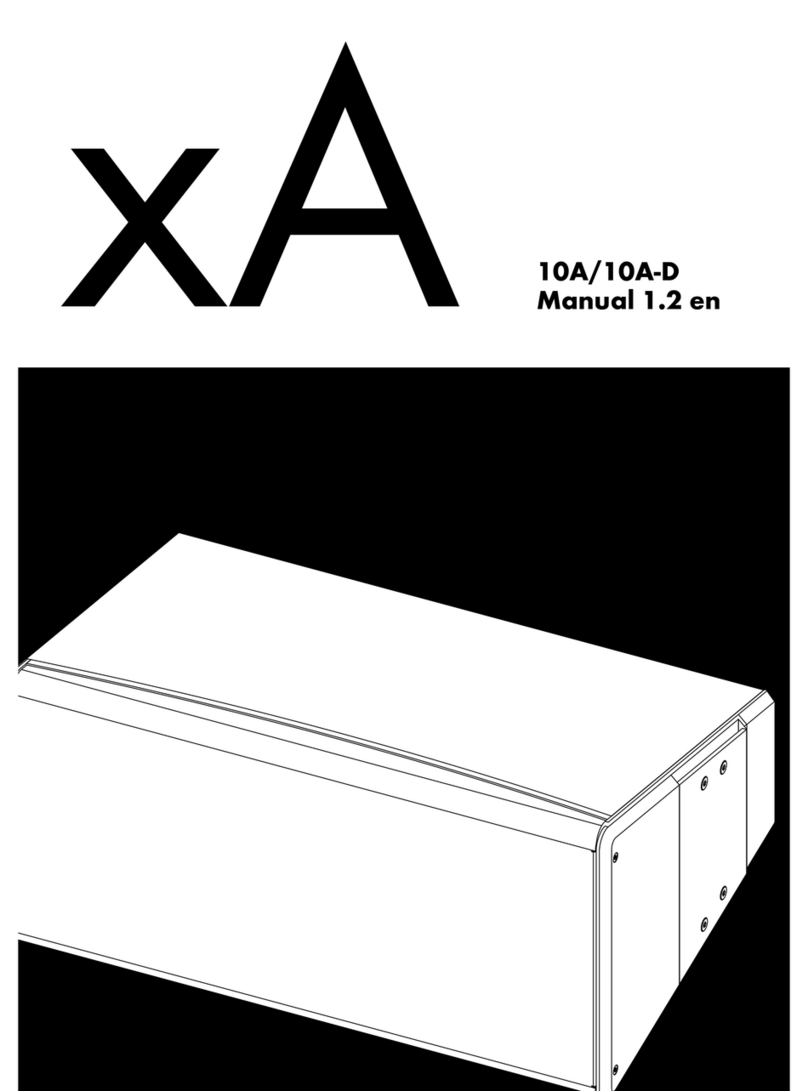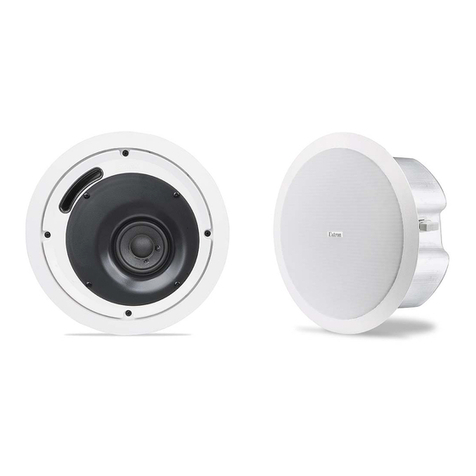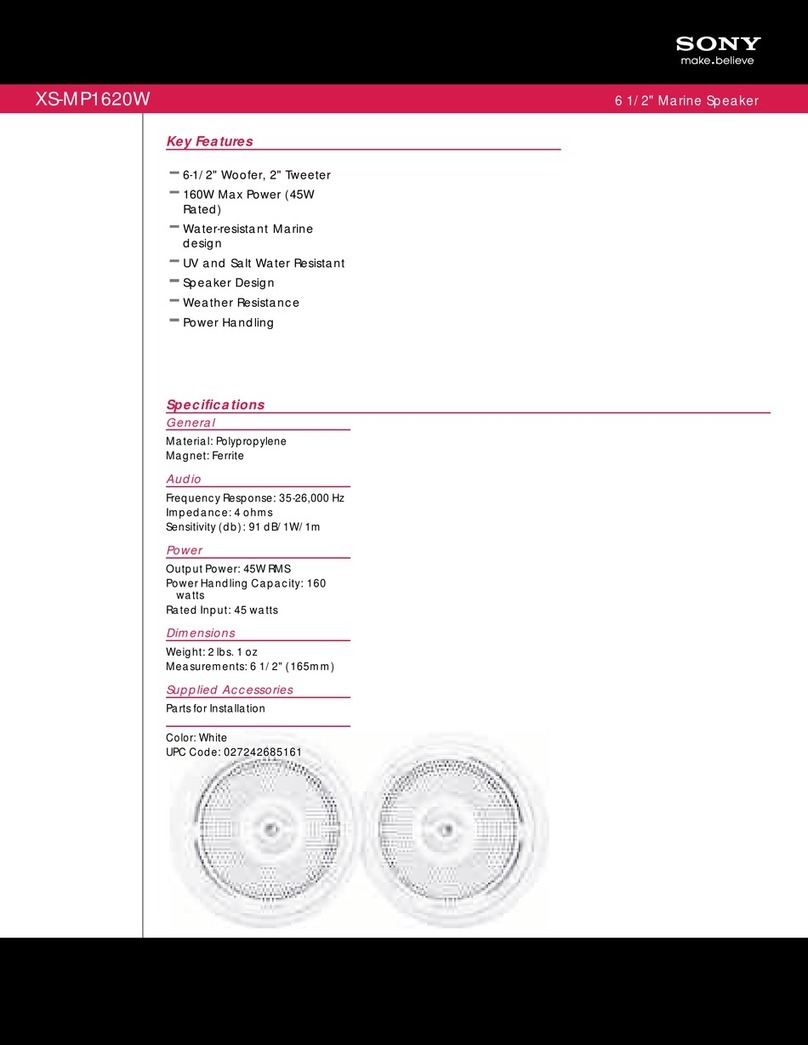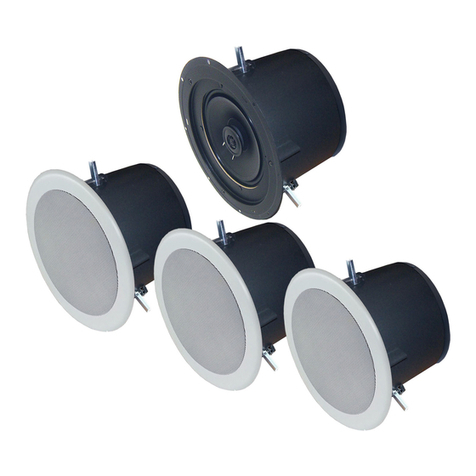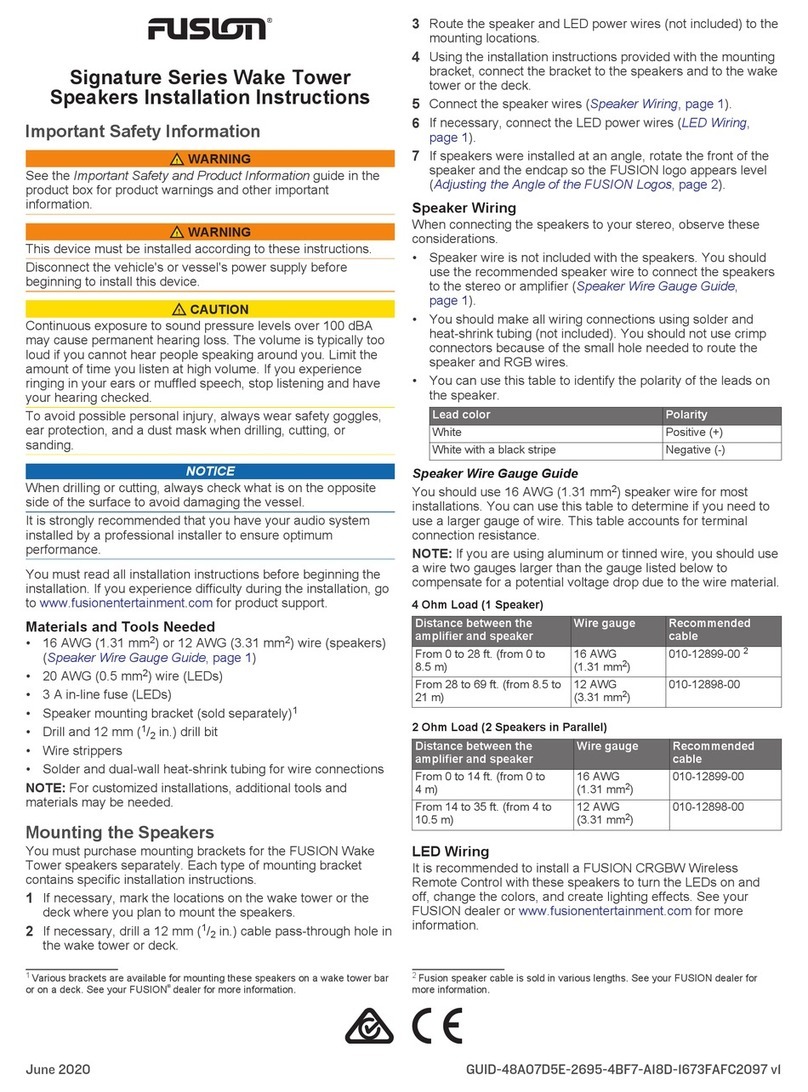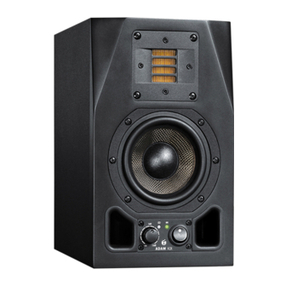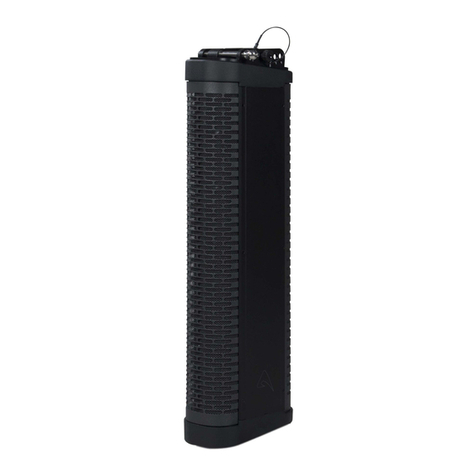Next Level Custom Installer Series User manual

INSTALLATION GUIDE
For 6-1/2" 15 ° Model
Overall Cut-Out (Round x Depth)
CI-IC6A 6-1/2"In-Ceiling15 ° Frameless Model 9-7/8"round 8-5/8"x5"
page 1 of 2Rev. B
Congratulations! You have purchased a high quality stereo
loudspeaker. When matched to comparable electronic equipment,
expect years of quality high delity sound. The CI Series brand
is based on the belief that music matters and we are focused on
delivering superlative music reproduction everywhere in your home.
The following manual is designed to give you, the installer or
owner, basic information as to the speaker’s installation and
operation. It is beyond the scope of this manual to go into all the
details that must be taken into consideration in a sophisticated
high delity system. When installing the wiring and speakers it is
important to adhere to all local codes and regulations. Consulting
a professional can help to maximize your system’s performance.
If you have any questions regarding this speaker which are not
answered by this manual, contact your local dealer for assistance.
For the most current information please visit:
www.NextLevelAcoustics.com.
MINIMUM TOOLS REQUIRED
# 2 Phillips Head Screw Driver / Drill Driver
Wire Cutter / Stripper
Other Possible Tools
Tape Measure, Pencil, Ladder, Drywall Saw, Stud-Finder, etc.
GENERAL DESCRIPTION
These two-way speakers have specially designed woofers with
linear long throw butyl rubber surrounds for long life and superior
damping. Dome tweeters are utilized for excellent high frequency
dispersion throughout your entire listening environment.
SHIPPING DAMAGE
Each speaker is thoroughly tested before it leaves the factory.
However, in shipment, accidents may occur. Please inspect your
speakers carefully when you receive them to make sure there
is no damage. If there is, please notify your dealer or supplier
immediately for assistance. If you received your speakers by
public transportation, report the damage immediately to the
shipping company.
AMPLIFIER OPERATION
These speakers will perform well with ampliers from 5 to 125
Watts RMS. However, damage to the speakers can be done by
ampliers of nearly any power rating if the amplier is overdriven
into clipping. “Amplier clipping” is a phrase used to describe
a condition when, because of the volume demand, an amplier
is being asked for more power than it can give. Clipping causes
distortion of the audio signal. If you should hear an unusual
amount of distortion at high listening levels then consider
reducing the volume. DAMAGE DONE TO A SPEAKER BY CLIPPING
IS NOT COVERED UNDER THE WARRANTY.
SPEAKER PLACEMENT
Placement of in-ceiling and in-wall speakers should be carefully
considered. Please contact a professional for assistance if you are
uncomfortable with the planning or installation process. Ideally,
the speakers should be located where they will provide the best
possible sound and ease of installation. It is beyond the scope of
this publication to discuss all of the various aspects of speaker
placement. However, here are a couple quick suggestions.
For the front channels of a home theater we recommend that the
speakers be placed between 18 and 36 inches (0.45m to 0.9m)
from an adjacent wall/surface, as measured to the center of the
hole. Avoid placing the speakers less than 12 inches (0.3m) from
an adjacent wall. When placing speakers near a corner, avoid
locating them an equal distance from the two adjacent surfaces.
If the drywall has not yet been installed, rough-in-kits are
available to reserve the speaker location. The hole is then cut
when the drywall is installed.
WIRING
To achieve maximum performance we recommend that the
speaker cable be at least 16 gauge or larger for runs over 50 feet
(15m) and that the cable be double insulated. A CL2 or CL3 rated
cable is usually sufcient. “Zip cord,” which is single insulated
and is often made with clear insulation, should be avoided as it
is not as durable. Allow about 2½ feet (0.8m) of free cable at the
speaker cut-out and sufcient length at the other end to reach
the electronics. Having to add extra cable later can be tedious and
time consuming.
Avoid bundling speaker cables parallel to electrical cables for
extended lengths. Though the impedance is low and the likelihood
of interference low, this may help reduce hum and RF interference.
When securing the cable, use care not to staple or nail through the
electrical conductors. Doing so could result in a short that might
damage the electronics.
When connecting your speakers, make sure proper polarity
(phasing) is maintained. Simply put, this means being sure the
same wire which is connected to the positive terminal of the
amplier has its other end connected to the positive terminal of
the speaker. It is important to check this on all speakers. If the
connections on one of the speakers are reversed, (out of phase)
the quality of your bass will be seriously impaired.
CI-IC6A

INSTALLATION
If the speaker locations have not yet been established then do so
now. If possible, assess the area behind the ceiling for possible
concealed obstructions such as wiring, heating ducts, cross-
bracing etc. Absence of a crawl space will require greater study
of observable clues and may also require the use of inspection
holes and inspection tools (camera, mirror, ashlight, etc.). Use
an “electronic stud nder” to locate the positions of the joists or
studs. We recommend that the edge of the speaker holes be at
least 3/4" (19mm) away from joists or studs whenever possible to
allow clearance for the toggle clamps.
Once the speaker locations are established use the cardboard
template or the plastic compass provided with your speaker to
draw the speaker cut-out. The hole diameters for the various
speakers are marked on the compass. The cardboard templates
may also be used as a visual aid for placement of the speakers. To
do this, temporarily hold the templates in place with a push tack
or tape.
Using the proper tool cut the appropriate sized
hole in the ceiling. On drywall, clean cuts can
be made with a drywall saw. Make sure to
clean the excess debris from the front face of
the hole to ensure a ush t.
If the cable has not yet been run, do so now that you have better
access to the ceiling. Once the speaker cable has been run, pull
the end of the cable out of the speaker cut-out, strip back a
section of the jacket as needed, and then expose ½" (13mm) of
each conductor.
To aid in speaker performance, a brous material, such as
berglass or polyester ber, may be placed behind the speaker.
This may also help to reduce unwanted sound from being
transmitted into adjoining rooms. If the ceiling space has blown
or loose insulation, it is important to prevent the insulation from
entering the back of the speaker. This can be accomplished by
placing a batt of berglass insulation, fabric barrier, or bag over
the back of the speaker. Placing a rigid enclosure behind the
speakers can be done but the enclosure should be large enough
not to degrade the performance of the speaker. Rigid enclosures
of less than 0.75 cu ft (21 liters) should be stuffed with acoustic
insulation such as berglass.
As the drawing shows, the speakers
utilize Toggle Clamps which, after
tightening, hold the speakers in place.
Ensure that the toggle clamps are
rotated into their “Home” position prior
to installation.
Verify that the speaker ts properly
into the cut-out and then remove the
speaker from the hole.
Connect the wire conductors to the terminals on the back of the
speaker by depressing each spring terminal, inserting the wire
into the hole, and releasing the terminal. Use care to observe the
proper polarity (+ & -). Speakers wired out of phase will exhibit an
apparent loss of bass response.
This speaker is
optimized for
off-axis listening
through the use
of a pivoting
tweeter and a 15
degree bafe tilt.
We recommend
directing the
woofer and tilting the tweeter toward the listening position. USE
CARE TO AVOID DAMAGING THE DOME OF THE TWEETER WHEN
AIMING!
Insert the speaker into the hole and turn each screw clockwise.
The toggle clamps will rotate outward to engage the ceiling
material as shown. Before tightening the three screws, orient the
speaker toward the listening area. Tighten all the screws.
CAUTION: DO NOT OVER-TIGHTEN THE CLAMPS. Too much torque
may damage the toggle, causing the speaker not to seat securely.
A snug t is all that is necessary to assure proper performance.
The grilles can be painted using multiple light coats of spray paint.
Custom color spray paints are available from specialty companies.
Contact your dealer for more
information. The grilles should
be removed from the speaker and
painted in a clean environment to
prevent contamination. It is best
to go around the grilles and apply
the paint from multiple angles. DO
NOT remove the scrim cloth from
the backside of the grille. It is not
replaceable.
The mid and high frequency levels
can also be adjusted as desired using the mid frequency (MF) and
high frequency (HF) switches. The MF switch is on the left and the
HF switch is on the right, when looking at the foam surface when
the speaker is installed in the ceiling. Moving the switches to the
left decreases the level and to the right increases the level (See
the image above).
Attach the grilles to the speakers and enjoy. Should you wish
to remove the grilles from the speakers pull at the grilles' edge.
Initially there will be signicant resistance because the grilles are
magnetically attached.
R
O
T
A
T
E
H
o
m
e
page 2 of 2Rev. B
Tighten 3
Phillips screws
Clean front
edge of cutout
to ensure a
flush fit.
Primary Listening Area
JS Speaker Technology, LLC | 701 Nutmeg Road N., South Windsor, CT 06074 | NextLevelAcoustics.com
This manual suits for next models
2
